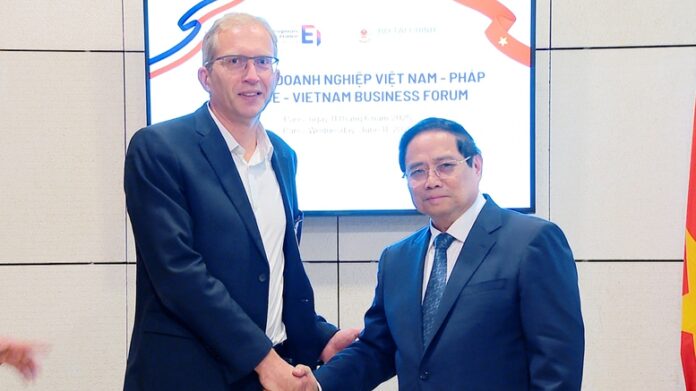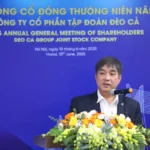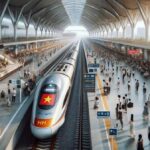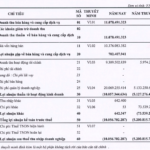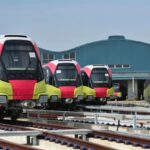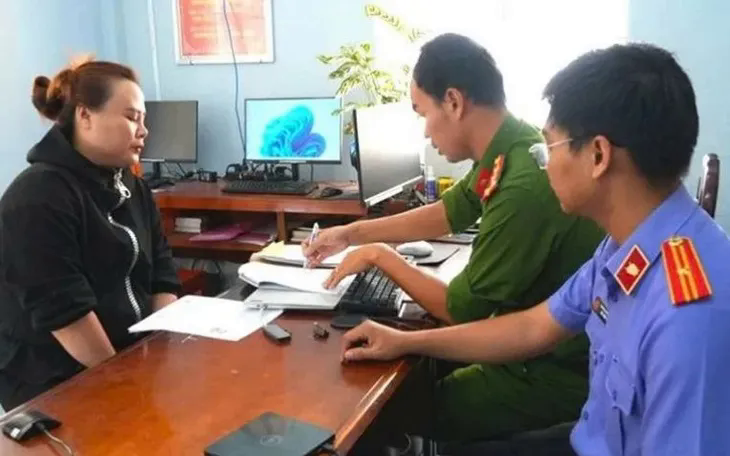Alstom Group Expresses Interest in the High-Speed North-South Railway Project
On the morning of June 11, local time (evening of the same day in Hanoi), during bilateral activities in the Republic of France, Prime Minister Pham Minh Chinh met with leaders of several leading French and European groups and enterprises, including Alstom in the field of transportation.
Mr. Henri Poupart-Laffarge, CEO of Alstom Group, shared that Alstom (established in 1928) is one of the world’s leading companies in the field of transportation solutions, with a revenue of 18.5 billion Euros in the 2024 financial year.
Alstom has been present in Vietnam for over 30 years and has actively participated in the country’s infrastructure development projects, such as the modernization plan for the railway signaling and telecommunications system, and the provision of core E&M equipment for Hanoi Metro Line 3 (Nhon-Hanoi Station), which commenced commercial operation in August 2024.
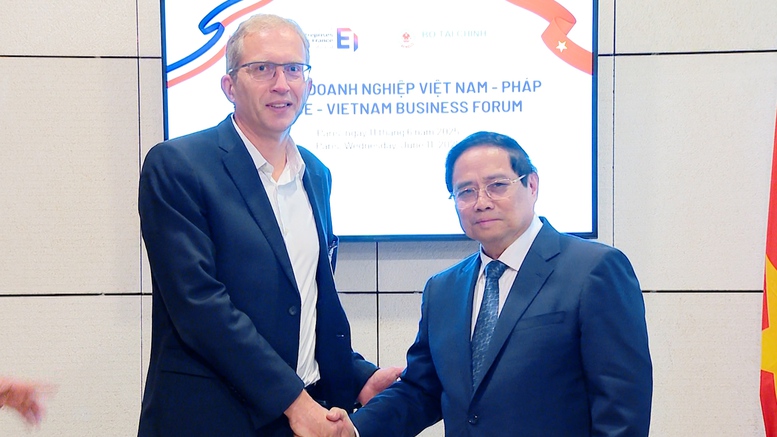
Prime Minister Pham Minh Chinh meets with Mr. Henri Poupart-Laffarge, CEO of Alstom Group. Photo: VGP/Nhat Bac
The group expressed its desire to expedite the construction of Hanoi Metro Line 3 – Phase 2, Ho Chi Minh City Metro Line 2, and other new lines by 2035, with a vision towards 2045. They also showed interest in participating in the high-speed railway project between Hanoi and Ho Chi Minh City and are willing to share high-speed railway technology and cooperate with Vietnamese enterprises to develop the national railway industry.
Welcoming these proposals, the Prime Minister emphasized that cooperation with France is an important part of implementing new railway projects in Vietnam. He requested the group to work with the Ministry of Construction and relevant businesses and units to carry out specific tasks.
Given Alstom’s experience in Hanoi with the urban railway project, the Prime Minister stressed the need for faster and more efficient cooperation going forward. He also requested the group to transfer technology, provide preferential loans, and train human resources in the railway sector.
Alstom’s Contributions to Hanoi Metro Line 3
The elevated section of Hanoi Metro Line 3 (8 stations) has been operational since August 2024. This 8-kilometer section connects Nhon to Cau Giay, offering an environmentally friendly mode of transportation and helping to reduce traffic congestion in Hanoi. Construction of the underground section (4 underground stations connecting to Hanoi Railway Station) has also commenced and will extend to Hanoi Station.
The Nhon – Hanoi Station urban railway project utilizes 10 train sets designed exclusively by Alstom. With the theme “Green Journey,” the trains feature three colors: green, pink-red, and white. The front of the train displays the symbol of the Temple of Literature, creating a unique signature for the capital.

The Nhon – Hanoi Station line uses 10 train sets exclusively designed by Alstom. Photo: Thai Ha
The trains operate continuously on the standard-gauge railway (1435 mm), with lightweight, high-durability, and environmentally friendly aluminum alloy bodies. The trains are designed according to European standards, featuring a luxurious and modern style and fully equipped with amenities that cater to the needs of Vietnamese passengers.
The train sets are among Alstom’s most modern products, equipped with various amenities such as air conditioning, ventilation, passenger announcement systems, cameras, independent fire and smoke detection systems, and LED lights that automatically adjust their brightness when entering underground sections. The interior features bright colors and LED lighting, creating a spacious and comfortable ambiance for passengers.

The train sets utilize Alstom’s most advanced solutions. Photo: Thai Ha
Notably, the trains employ Alstom’s state-of-the-art CBTC (Communication-Based Train Control) signaling solution, known as URBALIS. This solution offers several advantages, including a flexible system control structure, optimized safety, and uninterrupted passenger service.
Each train set consists of 4 cars (2 motorized cars with cabins, 1 motorized car, and 1 trailer), with 3 out of 4 cars utilizing 3-phase AC motors. The trains have a capacity of 944-1124 passengers per train set, with a density of approximately 6.6-8 passengers/m2, and operate at a commercial speed of 35 km/h and a design speed of 80 km/h.
The trains use a low-voltage DC third-rail power supply system, featuring a compact, simple, and robust structure, low construction and maintenance costs, and aesthetic appeal for the urban environment. The braking system is equipped with regenerative braking to reduce energy consumption and maintenance costs.
The low-floor design of the trains facilitates easy boarding and alighting for passengers, especially those with luggage or using wheelchairs. Additionally, dedicated spaces are provided for people with disabilities, along with seats reserved for the elderly, women, and children.
French Alstom Group Eyes High-Speed North-South Railway Project
Let me know if you would like me to continue refining or expanding on this title to better suit your needs.
On the morning of June 11, local time (afternoon in Hanoi, Vietnam), Prime Minister Pham Minh Chinh met with leaders of top French and European corporations during his bilateral activities in the Republic of France. This included a meeting with the transportation giant, Alstom, as part of his efforts to boost economic ties and seek investment opportunities with leading businesses in France and Europe.
The Underground King: Where’s the Money Coming From for Vietnam’s High-Speed North-South Railway?
The Deo Ca Group is set to offer over 193 million shares to its shareholders, aiming to boost its charter capital to nearly VND 6,800 billion. This move is intended to bolster working capital and fund strategic investments, including the expansion of the North-South Expressway in the East, and ventures into urban rail and high-speed rail for the North-South corridor.
The New Southern Hanoi: A Rising Metropolis with Large-Scale Developments
The southern part of Hanoi is undergoing a remarkable transformation with significant infrastructure and urban developments taking shape. With its innovative investment incentives and the emergence of grand-scale projects, this area is poised to become a thriving hub, attracting high-caliber professionals seeking a place to settle down and tourists alike, eager to explore its evolving landscape.
The First Year in Operation, the Metro Line Ben Thanh – Suoi Tien Reports a Loss of Over VND 10 Billion, Aims for Profit in 2025
As of December 31, 2024, the accumulated loss exceeded VND 35 billion. For 2025, the company aims to turn this around and has planned to return to profitability.

